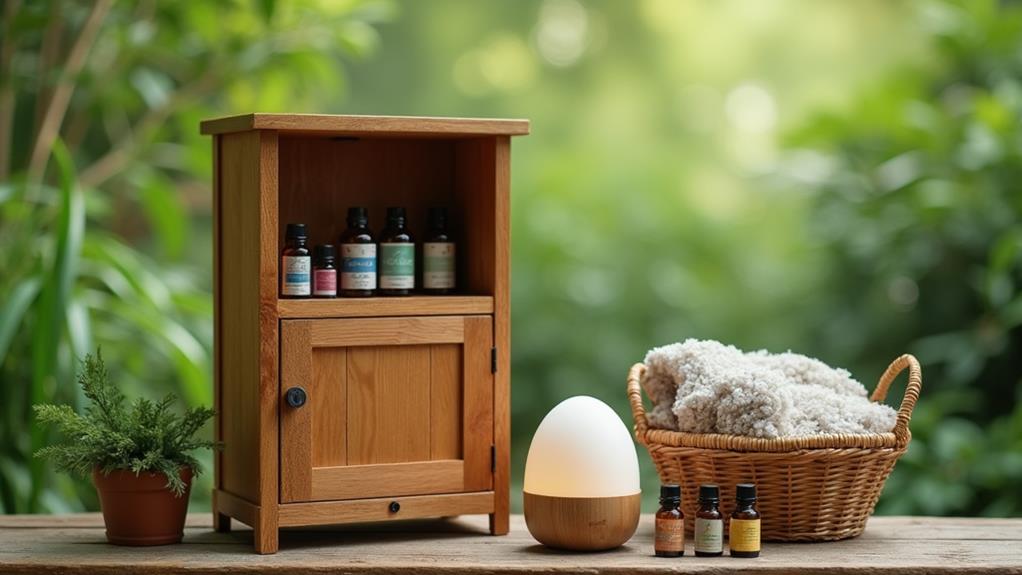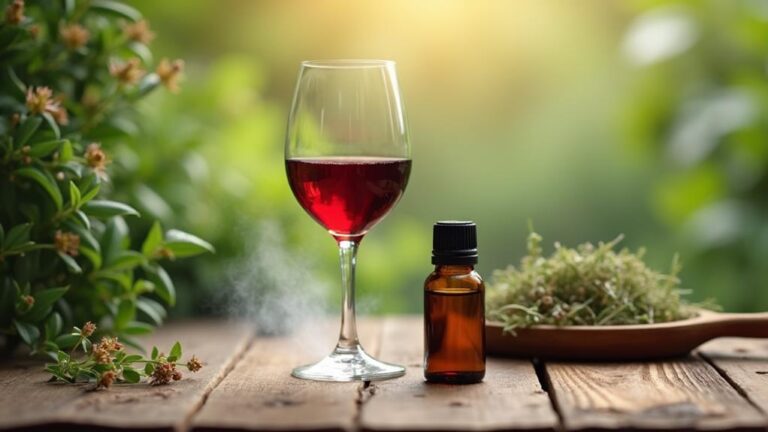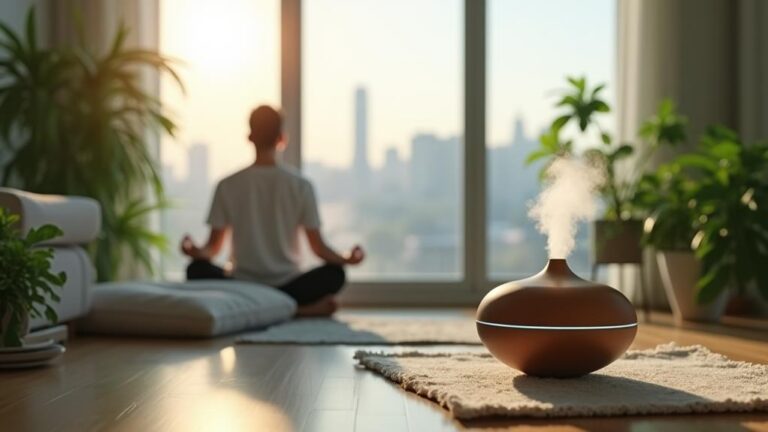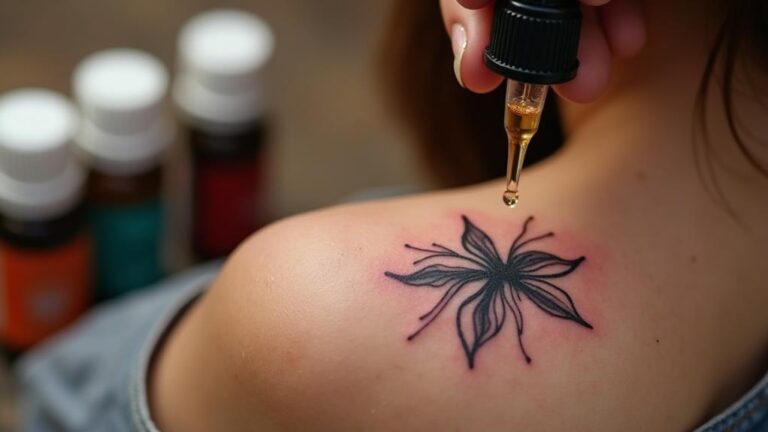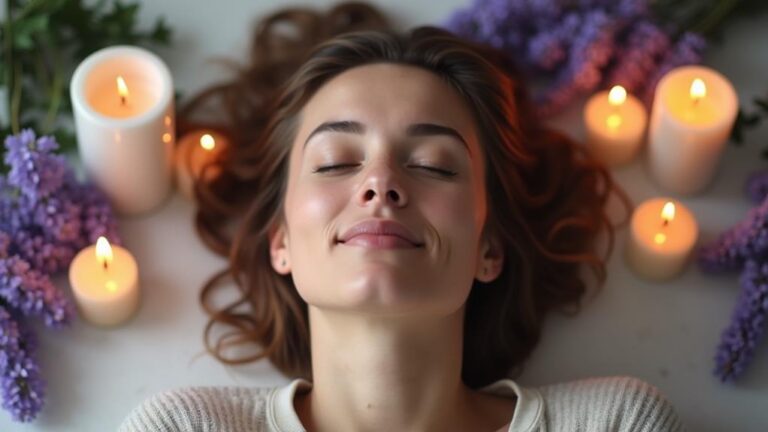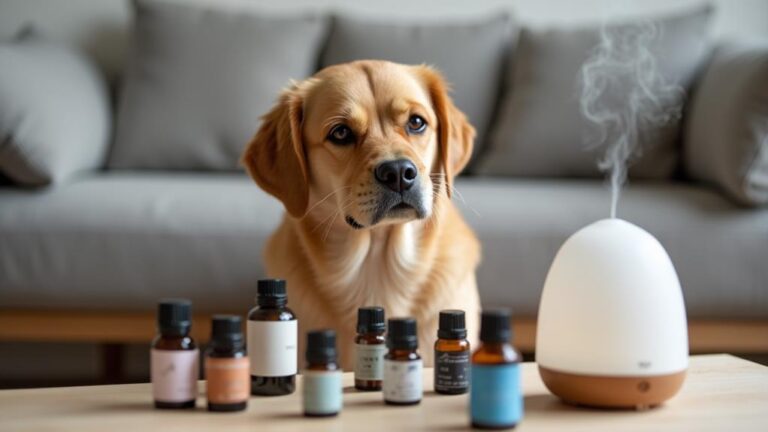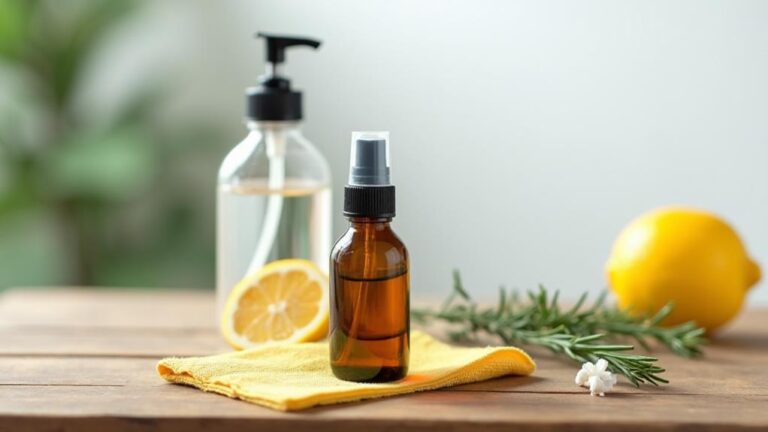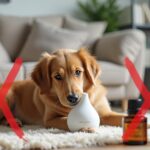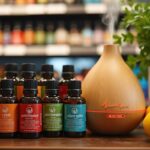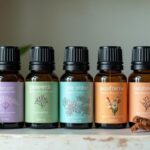You may think that using essential oils requires a lot of prior knowledge, but it's actually easier than you think to get started. With a few simple steps, you can begin incorporating these natural remedies into your daily routine and reap their wellness benefits. The first step is to choose high-quality oils that align with your needs and preferences, but that's just the beginning. As you move forward, you'll need to ponder the best ways to use these oils, from blending and diffusing to storing and experimenting. But where do you start with all these options?
Key Takeaways
- Research essential oils for desired benefits, such as relaxation, pain relief, or mood enhancement.
- Evaluate essential oils based on scent profiles, therapeutic effects, and potential interactions with medications.
- Choose a high-quality essential oil with pure oil certification and third-party verification of authenticity.
- Create a conducive environment with soft lighting, comfortable seating, and proper ventilation for essential oil use.
- Learn about blending ratios and carrier oils to safely dilute and deliver essential oils to the skin.
Choosing Essential Oils Wisely
When selecting essential oils, you'll find a multitude of options available, making it imperative to choose wisely.
To narrow down your choices, consider your essential preferences, such as the desired benefits, uses, and scents.
Different essential oils have unique scent profiles, which can influence their therapeutic effects and user experience. For instance, lavender oil has a calming and soothing scent profile, while peppermint oil has an invigorating and rejuvenating profile.
When evaluating essential oils, think about the specific benefits you're looking for.
Are you seeking relaxation, pain relief, or mood enhancement? Different oils have distinct properties that cater to various needs.
Additionally, some essential oils may interact with medications or have contraindications, so it's essential to research and understand their potential effects.
Considering your lifestyle and preferences can also help you make informed choices.
If you have allergies or sensitivities, look for hypoallergenic or gentle oils.
If you plan to use essential oils in aromatherapy or skincare, choose oils with suitable viscosities and concentrations.
Understanding Oil Quality Standards
When evaluating essential oil quality, you'll want to look for pure oil certification, which verifies that the oil meets certain standards of authenticity and purity.
Scientific testing methods, such as gas chromatography and mass spectrometry, are used to analyze the oil's chemical composition and detect any adulterants.
You should also check if the oil complies with industry regulations, such as those set by the International Organization for Standardization (ISO) or the National Association for Holistic Aromatherapy (NAHA).
Pure Oil Certification
As you navigate the world of essential oils, understanding the standards that define a "pure" oil is essential.
When it comes to pure oil certification, you'll want to look for third-party organizations that verify the oil's quality. These organizations assess the oil's authenticity, ensuring it's free from adulterants and accurately labeled.
Oil authentication is pivotal, as it guarantees the oil's botanical identity and prevents mislabeling.
Sourcing transparency is also indispensable in pure oil certification.
You'll want to know where the plants were sourced, how they were cultivated, and whether they were sustainably harvested. This information is imperative in ensuring the oil's quality and environmental impact.
Reputable essential oil companies will provide clear sourcing information, allowing you to make informed purchasing decisions.
When evaluating pure oil certification, look for organizations that adhere to strict standards, such as the International Organization for Standardization (ISO) or the National Association for Holistic Aromatherapy (NAHA).
These organizations have established protocols for oil authentication, sourcing transparency, and quality control, ensuring that the oil meets rigorous standards.
Scientific Testing Methods
Several scientific testing methods are employed to assess the quality of essential oils and guarantee they meet rigorous standards.
When you're looking for high-quality essential oils, it's vital to understand the testing methods used to evaluate their quality. Gas Chromatography (GC) is a widely used technique that separates and analyzes the individual components of an essential oil.
This method helps identify the oil's chemical composition, ensuring it meets the required standards.
Another testing method is Spectroscopy Analysis, which involves measuring the interaction between light and matter.
This technique allows you to analyze the molecular structure of an essential oil, providing valuable information about its chemical makeup.
By combining GC and Spectroscopy Analysis, you can gain a thorough understanding of an essential oil's quality and authenticity.
These testing methods enable you to make informed decisions about the essential oils you choose to use, ensuring they meet your standards and requirements.
When evaluating essential oils, look for products that have undergone these rigorous testing methods to guarantee their quality and purity.
Industry Regulations Compliance
To guarantee the quality and safety of essential oils, you need to ponder the industry regulations they adhere to.
Essential oil manufacturers must comply with regulations set by government agencies and industry organizations to certify the products meet certain standards. The US Food and Drug Administration (FDA) and the International Organization for Standardization (ISO) are two prominent bodies that regulate the essential oil industry.
When it comes to label claims, you should look for compliance frameworks that support the manufacturer's assertions.
For example, if a label claims that the oil is "100% pure" or "therapeutic grade," you should check if the manufacturer has adhered to a recognized standard, such as ISO 9001 or Good Manufacturing Practice (GMP). Compliance with these frameworks verifies that the manufacturer has implemented quality control measures to support their label claims.
Preparing a Safe Space
A well-prepared space is crucial when working with essential oils. You'll want to create an Essential Sanctuary that promotes a Calming Atmosphere, allowing you to focus on the benefits of aromatherapy.
To achieve this, consider the following elements:
| Element | Description | Purpose |
|---|---|---|
| Soft Lighting | Dim, warm, and cozy light | Reduces stress and promotes relaxation |
| Comfortable Seating | Plush chairs or pillows | Supports physical comfort and relaxation |
| Calming Colors | Soothing colors such as blue, green, or beige | Creates a sense of calm and serenity |
| Ventilation | Proper airflow and air circulation | Prevents oil buildup and maintains air quality |
| Minimal Distractions | Quiet and clutter-free space | Enhances focus and relaxation |
When setting up your space, prioritize these elements to create a conducive environment for using essential oils. This will help you reap the benefits of aromatherapy and guarantee a safe and enjoyable experience. By investing time and effort into preparing your space, you'll be able to fully immerse yourself in the world of essential oils.
Learning Basic Blending Techniques
To create effective essential oil blends, you'll need to understand the basics of blending ratios, carrier oils, and aromatic combinations.
A Blending Ratio Guide will help you determine the ideal proportions of essential oils to use in your blends, ensuring they're safe and effective.
Blending Ratio Guide
To create effective blends, follow these general guidelines for fragrance ratios:
- Top notes (10-30%): Use essential oils with light, fresh aromas that evaporate quickly, such as citrus or mint oils.
- Middle notes (40-60%): Incorporate oils with rich, floral, or spicy aromas that provide depth and warmth, such as lavender or geranium oils.
- Base notes (10-30%): Add oils with strong, woody, or earthy aromas that linger longest, such as patchouli or sandalwood oils.
Choosing Carrier Oils
When blending essential oils, you'll need a carrier oil to dilute and deliver the active compounds to the skin safely. The choice of carrier oil depends on its oil properties and your skin type. Selecting the right carrier oil is vital for an effective and safe essential oil blend.
| Carrier Oil | Suitable Skin Type |
|---|---|
| Sweet Almond Oil | Normal, dry, or sensitive skin |
| Coconut Oil | Normal or oily skin |
| Jojoba Oil | All skin types, especially mature skin |
Consider the oil properties of the carrier oil, such as its viscosity, shelf life, and fatty acid composition. For example, sweet almond oil is rich in oleic and linoleic acids, making it suitable for dry or sensitive skin. Coconut oil, on the other hand, is high in saturated fatty acids, which may clog pores in dry or sensitive skin. Jojoba oil is easily absorbed and has a high shelf life, making it suitable for all skin types, especially mature skin. Choose a carrier oil that complements the properties of your essential oil blend and your skin type for ideal results. Always dilute essential oils in a carrier oil before applying to the skin.
Aromatic Oil Combos
Blending essential oils effectively involves mixing different oils to create unique aromatic combinations that cater to specific needs or moods.
You'll discover scented synergies that not only smell great but also provide therapeutic benefits. To start blending, you'll need to understand the basics of combining essential oils.
When creating floral fusions, you'll want to balance top notes, middle notes, and base notes.
- Top notes provide the initial scent impression and are usually light and fresh. Examples include citrus and mint essential oils.
- Middle notes add depth and warmth to your blend. Examples include lavender and geranium essential oils.
- Base notes provide the longest-lasting scent and are often rich and earthy. Examples include sandalwood and patchouli essential oils.
Selecting the Right Diffuser
Choosing the right diffuser for your essential oils is pivotal for their effective dispersal and therapeutic benefits.
When selecting a diffuser, you'll find various types, including ultrasonic, nebulizing, and heat-based diffusers. Ultrasonic diffusers use water and high-frequency sound waves to create a fine mist, while nebulizing diffusers blow compressed air to create a stronger, more concentrated fragrance.
Heat-based diffusers, on the other hand, use a warm surface to release the oil particles into the air.
Each diffuser type has its own advantages and disadvantages, and your choice ultimately depends on your specific needs and preferences.
Considering the diffuser placement is also key. Place your diffuser in a well-ventilated area to avoid over-saturation of the air with essential oil particles.
Additionally, positioning it at least 3 feet away from any walls or surfaces to prevent oil residue buildup and potential damage.
By carefully evaluating your options and considering the diffuser placement, you can guarantee that your essential oils are dispersed efficiently and effectively, allowing you to enjoy their full benefits.
Different rooms and spaces may require different diffuser types and placement.
Using Oils for Wellness Benefits
With your diffuser in place, you're now ready to harness the wellness benefits of essential oils.
When used correctly, essential oils can provide numerous benefits, including promoting Mental Clarity and supporting Emotional Balance.
Different essential oils have unique properties that can be beneficial for various aspects of your well-being.
Here are three ways you can use essential oils for wellness benefits:
- Mood Enhancement: Certain essential oils, such as lavender and bergamot, have been shown to have a positive effect on mood and can help reduce stress and anxiety.
- Improved Focus: Peppermint, eucalyptus, and rosemary essential oils have been found to promote Mental Clarity and improve focus, making them ideal for use during work or study sessions.
- Relaxation and Calmness: Oils like chamomile and ylang-ylang can help promote relaxation and calmness, making them perfect for use before bedtime or during meditation.
Storing Essential Oils Properly
When choosing containers for your essential oils, opt for dark bottles.
Dark-colored glass helps block out light, which can cause the oils to oxidize and lose their potency. Amber or cobalt blue bottles are popular choices for essential oil storage, as they provide excellent protection from UV light.
When storing your essential oils, make sure the bottles are tightly sealed to prevent oxygen from entering the bottle.
You can also store your essential oils in a refrigerator to slow down the oxidation process. However, be sure to check the label for any specific storage instructions, as some oils may require special care.
Frequently Asked Questions
Can I Use Essential Oils on My Pets Safely?
You must exercise caution when using essential oils on your pets, as they can be toxic if not used correctly. Research pet dosage guidelines and look for brands that conduct animal testing to guarantee safety.
Are Essential Oils Safe During Pregnancy and Breastfeeding?
You're about to navigate a minefield of risks during pregnancy and breastfeeding. Approach essential oils with caution, as some may pose pregnancy risks. Opt for safe alternatives, like gentle herbal teas or prenatal massages, instead.
Can I Ingest Essential Oils for Internal Health Benefits?
When considering ingesting essential oils for internal health benefits, you must prioritize essential oil quality and understand oil absorption rates, as poor quality oils and improper dosing can be toxic or cause adverse effects.
Do Essential Oils Interact With Prescription Medications?
When taking prescription medications, you're basically charting a complex puzzle, where one wrong piece can disrupt the entire picture. Essential oils can be that piece, as they may interact with your meds, increasing drug interactions and medication risks.
Can I Use Essential Oils on Children and Babies?
When using essential oils on children and babies, prioritize child safety and consult pediatric aromatherapy guidelines. You'll need to dilute oils, choose gentle blends, and avoid certain oils, like peppermint and eucalyptus, which can be irritating.
Conclusion
You've completed the 7 steps to start using essential oils. Now you're on your way to harnessing their potential benefits. Surprisingly, did you know that the global essential oil market is projected to reach $16.7 billion by 2025, up from $9.6 billion in 2020? As you continue to explore and experiment, keep in mind the importance of quality, safety, and proper use. With time and experience, you'll tap into the full potential of essential oils for your well-being.


